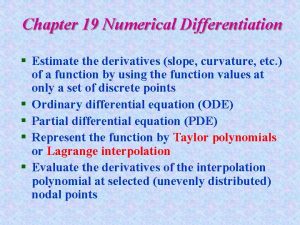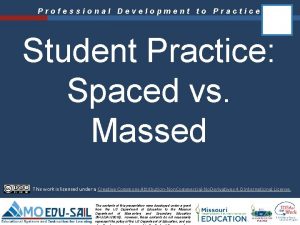KS 5 Spaced Learning Practice AQA Mr Powell





- Slides: 5

KS 5 Spaced Learning Practice AQA – Mr Powell Quick-fire Questions & Quizlet Links

Prefixes What is the value of the prefix T (tera) 10¹² What is the value of the prefix G (giga) 10⁹ What is the value of the prefix M (mega) 10⁶ What is the value of the prefix k (kilo) 10³ What is the value of the prefix d (deci) 10⁻¹ What is the value of the prefix c (centi) 10⁻² What is the value of the prefix m (milli) 10⁻³ What is the value of the prefix μ (micro) 10⁻⁶ What is the value of the prefix n (nano) 10⁻⁹ What is the value of the prefix p (pico) 10⁻¹² Work through the questions on the list on a projector OR print and cover. QR Codes, give a quick quiz on the ideas Animated Science 2020

Quantities, Units and Conversions What six base units of the SI system are metre, kilogram, second, Ampere, Kelvin, used in A Level Physics? Mole What six base quantities of the SI system length, mass, time, electric current, absolute are used in A Level Physics? temperature, amount of substance. What is the base unit of mass? kg What is the base unit of length? m What is the base unit of time? s What is the base unit of current? A What is the base unit of temperature? K What is the SI unit of potential difference? V What are the SI units of density? kgm⁻³ What is the SI unit of energy? J What is the SI unit of power? W What is the SI unit of charge? C What is 1 m² in mm²? 10⁶mm² What is 1 m³ in cm³? 10⁶cm³ What is 1 km² in m²? 10⁶m² What is 1 cm³ in mm³? 10³mm³ There are 10²⁴ free charge carriers per m³ of a material. How many are there per mm³? 10¹⁵ 10⁶ particles strike each mm² of a surface per second. How many strike 1 m² of the surface per second? 10¹² If there is 1 particle per mm³, how many are there per m³? 10⁹ Water has a density of 1000 kgm⁻³. What is this in kgcm⁻³? 10⁻³ Water has a density of 1000 kgm⁻³. What is this in gcm⁻³? 1 What six base units of the SI system are metre, kilogram, second, Ampere, Kelvin, used in A Level Physics? Mole Animated Science 2020

Measurements, errors and uncertainties Part 1 What is a control variable? Something that must be kept constant to prevent it affecting the dependent variable What is meant by the repeatability of results? Similar results would be obtained from repeats of the same measurement from the same experimental set up. What is meant by the reproducibility of Similar results would be obtained from repeats by different people with results different equipment. How can you ensure a metre rule is Use a plumb line, set square or spirit level held vertically? How do you avoid parallax error? Ensure eye, object and scale are all in line with each other OR ensure object and scale are directly adjacent to each other What is meant by the term random error? Errors that cause the measurement to vary in unpredictable ways. What is a systematic error? An error that causes the measurements to differ from the true value by a consistent amount. What is a zero error? An error that occurs due to the measuring instrument reading a nonzero reading when the measured quantity is zero. What is meant by the accuracy of a result? What is meant by the precision of results? What is meant by the resolution of a measuring instrument? What determines the resolution when using a multimeter? What is the resolution of a metre rule? What is the resolution of vernier calipers? What is the resolution of a micrometer How close a measurement is to the 'true' or accepted value How close repeated measurements are to each other. The smallest change in quantity that can be measured. The scale selected. 1 mm 0. 01 mm Animated Science 2020

Measurements, errors and uncertainties – Part 2 How do you find the absolute uncertainty from repeated readings? How do you estimate uncertainty when repeated results are identical How do you calculate percentage uncertainty? What do you do to the uncertainties when quantities are added or subtracted? What do you do to the uncertainties when quantities are multiplied or divided? What do you do to the uncertainties when a quantity is raised to a power? How do you find the uncertainty in a gradient? ± ½ the range of the repeats ± ½ the resolution of the instrument (Absolute uncertainty ÷ 'calculated OR measured' value) × 100 The absolute uncertainties are added together The percentage uncertainty is multiplied by that power ± (gradient of the line of best fit − gradient of the line of worst fit) What is a line of worst fit? The steepest or shallowest line that passes through the error bars. What are error bars? Lines to show the range of the absolute uncertainty of each data point on a graph Animated Science 2020









